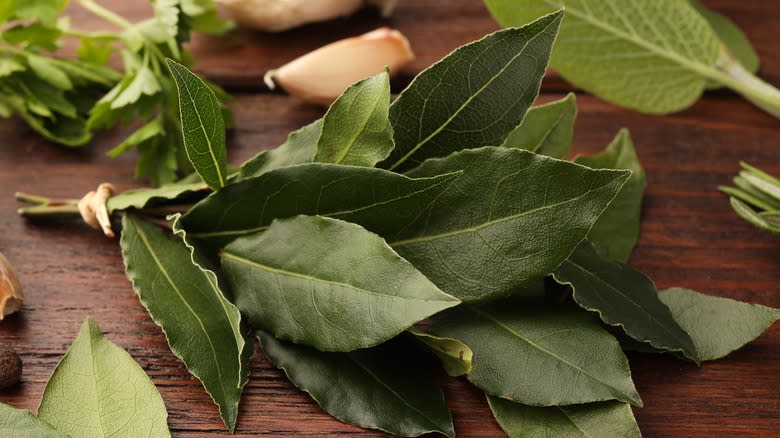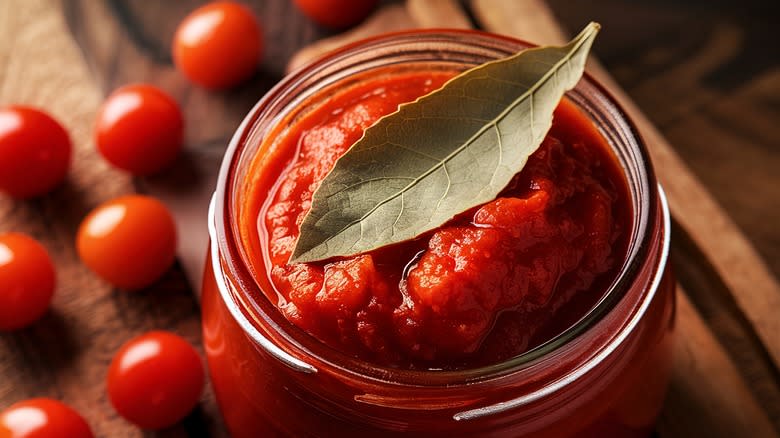The Absolute Best Times To Use Fresh Bay Leaves In Your Recipes

Although you probably have bay leaves in your spice cabinet, ready for use in stews, sauces, stocks, and curries, they likely aren't the freshest, which means they aren't doing much for recipes. We're not saying bay leaves are useless — why we even cook this herb is a hot topic, but there may be less debate if everyone tried using fresh leaves. With a more pronounced flavor profile, fresh bay leaves can add noticeable depth and balance to dishes, providing you know which recipes are best suited for the boldly flavored leaves.
In comparison to dried bay leaves that are subtly herbaceous, fresh leaves have stronger notes of pine, pepper, and eucalyptus. They can also boast a hint of bitterness. Due to this potency, fresh bay leaves impart more flavor in less time. So fresh bay leaves are ideal in quick-cooking pan sauces and condiments like a pomegranate glaze where the herb should steep just briefly, allowing enough of its flavors to be infused without overwhelming a recipe. They also work well in a roast, like this herb-roasted chicken recipe. For slowly simmered soups and braises, you may prefer to stick with dried leaves.
This isn't to say that restraint is essential with fresh bay leaves. To fully highlight the herb's nuances in cocktails, teas, and other drinks, opting for fresh leaves is a must. Alternatively, their herbal and earthy intensity can even provide a great contrast against richly flavored dishes, such as a decadently sweet crème brûlée.
Read more: The 20 Best Olive Oils For Cooking
Select Fresh Bay Leaves Wisely

Not all bay leaves are the same, which is why it's worth doing some research before adding fresh herbs into a recipe. Beyond Mediterranean bay laurel — specifically, mellow and widely available Turkish bay leaves — there are many other varieties. For instance, citrusy Indonesian and sweetly spiced Indian bay leaves are equally as delicate, whereas Mexican versions boast the most herbal subtlety. In contrast, fresh California bay leaves are extremely potent, putting them at risk of overpowering a dish.
Regardless of the variety, err on the side of caution when cooking with fresh bay leaves. We suggest opting for half the amount of dried leaves specified in a recipe. It's also wise to keep infusion periods short. Fishing out fresh leaves earlier in the cooking process will allow warm and minty nuances to be imparted without detracting from other flavor components.
Fresh bay leaves can be tough to track down, if you don't grow your own plant. Some supermarkets and specialty retailers may have them, but they will be much pricier than dried, and need to be used quickly since once picked they're only at their most flavorful for about a week. If you do manage to get your hands on fresh leaves, placing them in an airtight container in the fridge will help prolong their shelf-life, giving you more time to introduce fresh bay leaves into your favorite recipes.
Read the original article on Tasting Table.


